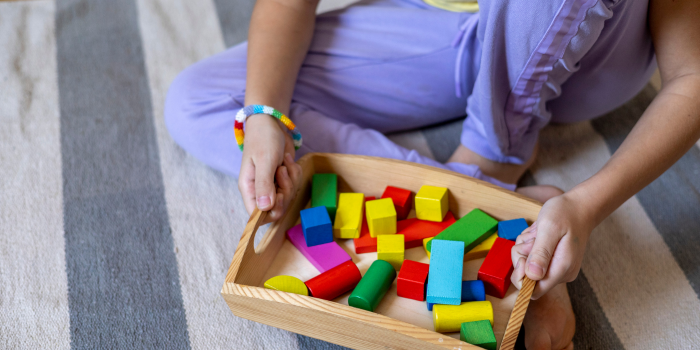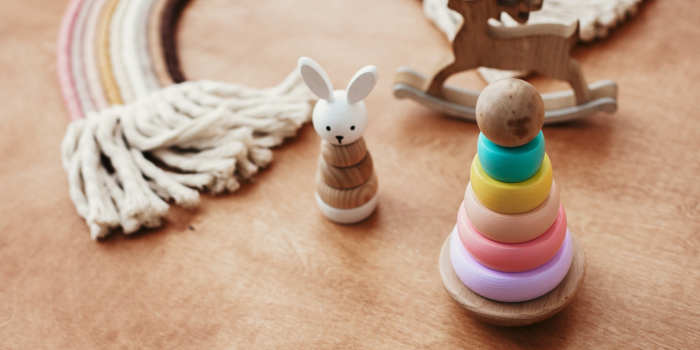As parents, we go above and beyond to ensure our children get the best of everything. From food to clothing, we want only the best for our kids. However, have we ever thought about how their toys can affect not only their health but also the environment around us? With a growing focus on sustainability, eco-friendliness has become a buzzword of sorts. Choosing eco-friendly toys for our children should be a conscious decision we make as responsible parents. In this comprehensive guide, we’ll delve into why eco-friendly toys matter more than ever and explore how these toys can make a positive impact on our children and the world they will inherit.
- Health Benefits: Most conventional toys contain harmful chemicals such as phthalates, BPA, and lead, which can cause developmental problems in children. Eco-friendly toys, on the other hand, are made from organic materials and are free from toxic chemicals. These toys not only provide a safer play experience for children but also contribute to their cognitive development and sensory skills. According to a study published in the Journal of Environmental Health Perspectives, exposure to chemicals found in conventional toys has been linked to an increased risk of behavioral issues in children (Smith et al., 2013). By opting for eco-friendly toys, parents can prioritize their child’s well-being and ensure a healthier environment for them to grow and play.
- Environmental Impact: The manufacturing of conventional plastic toys emits toxic gases into the atmosphere and contributes to landfills, exacerbating environmental issues. Eco-friendly toys, on the other hand, are made from non-toxic and renewable resources such as sustainably sourced wood and bamboo. These materials are biodegradable, reducing the carbon footprint and waste generation. A study conducted by the Environmental Protection Agency (EPA) estimates that plastic toys contribute significantly to the plastic waste in landfills (EPA, 2019). By choosing eco-friendly toys, parents can actively participate in reducing environmental harm and contribute to a cleaner, greener planet for future generations.
- Innovation and Creativity: Eco-friendly toys foster creativity and imagination, playing a crucial role in cognitive development. Unlike conventional toys that often come with predetermined functions and limited play value, eco-friendly toys provide open-ended play experiences. Wooden blocks, puzzles, and building sets, for example, allow children to think outside the box, experiment, and develop problem-solving skills. According to a study published in the Journal of Child Development, imaginative play has been associated with higher levels of creativity, language development, and social skills (Lillard et al., 2013). By encouraging imaginative play and creativity, eco-friendly toys offer a more enriching and holistic developmental experience for children.
- Supporting Local Artisans: By choosing eco-friendly toys, we can support local artisans who specialize in making handcrafted toys. These toys are often made from natural materials and showcase the artistry and craftsmanship of skilled individuals. By investing in eco-friendly toys, parents can contribute to the growth of local businesses and communities. Furthermore, these toys are often unique and one-of-a-kind, providing children with a sense of connection to the artisans who created them. Supporting local artisans also helps preserve traditional craftsmanship and cultural heritage, adding value to the toys beyond their playability.
- Educational Value: Eco-friendly toys often have educational components that promote learning and skill development. For instance, many eco-friendly puzzles help children enhance their problem-solving abilities and spatial awareness. Building sets and construction toys encourage logical thinking and fine motor skills. These toys offer a fun and engaging way for children to learn and develop important skills, making playtime an opportunity for educational growth. Several studies have highlighted the positive impact of educational toys on children’s cognitive and academic development (Miller et al., 2011; Sarama et al., 2014).
- Financial Considerations: While eco-friendly toys may initially seem more expensive than their conventional counterparts, they often offer greater durability and longevity. High-quality eco-friendly toys are built to last, reducing the need for frequent replacements. In the long run, investing in eco-friendly toys can be cost-effective and even save money. Additionally, by choosing well-crafted toys that withstand the test of time, parents can pass them down to siblings or donate them to other children, further extending their lifespan and reducing waste.
The Importance of Choosing Eco-Friendly Children’s Toys

In conclusion, choosing eco-friendly toys for our children has numerous benefits. From safeguarding their health and well-being to reducing environmental impact, fostering creativity, supporting local artisans, and providing educational value, these toys offer a compelling alternative to conventional options. By making a conscious decision to prioritize eco-friendly toys, parents invest in their children’s future and contribute to a more sustainable world for generations to come. Let’s take the opportunity to embrace green living and opt for eco-friendly toys that not only enrich our children’s lives but also help build a brighter future for all. Together, we can make a significant difference—one toy at a time.
Eco-Friendly Children Toys FAQs
Are eco-friendly toys more expensive than conventional toys?
While eco-friendly toys may have a slightly higher upfront cost compared to conventional toys, they often offer greater durability and longevity. High-quality eco-friendly toys are built to last, reducing the need for frequent replacements. In the long run, investing in eco-friendly toys can be cost-effective and even save money. Additionally, eco-friendly toys often have higher educational and play value, providing a more enriching experience for children.
Are eco-friendly toys safe for children?
Yes, eco-friendly toys are designed with the safety of children in mind. They are made from organic, non-toxic materials, and do not contain harmful chemicals such as phthalates, BPA, or lead. By choosing eco-friendly toys, parents can provide a safer play environment for their children and minimize the risk of exposure to harmful substances.
Can eco-friendly toys be as engaging and fun as conventional toys?
Absolutely! Eco-friendly toys come in a wide variety of options that are just as engaging and fun as conventional toys, if not more. From building sets and puzzles to art supplies and outdoor play equipment, there are eco-friendly alternatives available for every age and interest. Many eco-friendly toys also promote open-ended play, which encourages creativity and imagination in children.
Where can I find eco-friendly toys?
Eco-friendly toys can be found in various places, both online and offline. Many specialty toy stores now carry eco-friendly toy lines, and there are numerous online retailers dedicated to sustainable and ethical products. Additionally, local markets, craft fairs, and eco-conscious events often feature artisans who create handcrafted eco-friendly toys. It’s important to research and read reviews to ensure that the toys you purchase are genuinely eco-friendly and meet safety standards.
How can I teach my child about the importance of eco-friendly toys?
Teaching children about the importance of eco-friendly toys can be done through open conversations and leading by example. Engage your child in discussions about sustainability, recycling, and the impact of plastic waste. Involve them in the toy selection process and explain why you choose eco-friendly options. Encourage them to take care of their toys, repair them when needed, and pass them on to others once they outgrow them. By involving children in these conversations and actions, you can instill a sense of environmental responsibility from a young age.
Are eco-friendly toys suitable for all ages?
Yes, eco-friendly toys are available for children of all ages, from infants to teenagers. There are eco-friendly options specifically designed to stimulate the senses and aid in early development for infants and toddlers, as well as more complex and engaging toys for older children. It’s important to consider age-appropriate toys and always follow the recommended age guidelines provided by the manufacturers.
Remember, choosing eco-friendly toys is a conscious decision that not only benefits our children but also the environment. By opting for safer, sustainable, and educational toys, we can make a positive impact on our children’s lives and create a greener future for generations to come.
References:
Environmental Protection Agency (EPA). (2019). Plastics: Material-Specific Data. Retrieved from https://www.epa.gov/facts-and-figures-about-materials-waste-and-recycling/plastics-material-specific-data
Lillard, A. S., Lerner, M. D., Hopkins, E. J., Dore, R. A., Smith, E. D., & Palmquist, C. M. (2013). The impact of pretend play on children’s development: A review of the evidence. Psychological Bulletin, 139(1), 1-34.
Miller, E. B., Almon, J., & Kazi, S. (2011). Crisis in the Kindergarten: Why Children Need to Play in School. Alliance for Childhood.
Sarama, J., Clements, D. H., & Early Childhood Research & Practice. (2014). Building Blocks and Cognitive Building Blocks: Playing to Know the World Mathematically. Early Childhood Research & Practice, 16(1). Retrieved from https://files.eric.ed.gov/fulltext/EJ1054380.pdf
Smith, D., Eastman, C. J., Spiegel, M. L., & Cohen, B. (2013). Predicting exposure to chemicals in children: Toxicokinetics and developmental toxicants. Environmental Health Perspectives, 121(3), 298-309.

Iryna wants to make this world a better, greener place with less waste. Her mission is to protect the planet from plastic pollution by bringing awareness to this global crisis through her website. Send her an email to learn more about her mission and how we can help!



